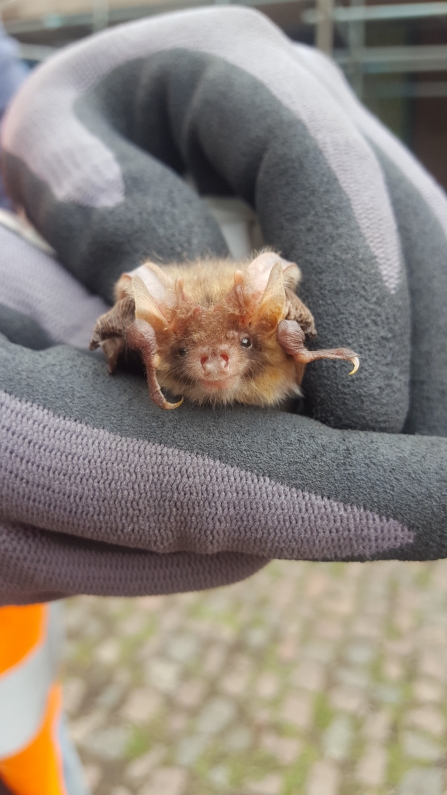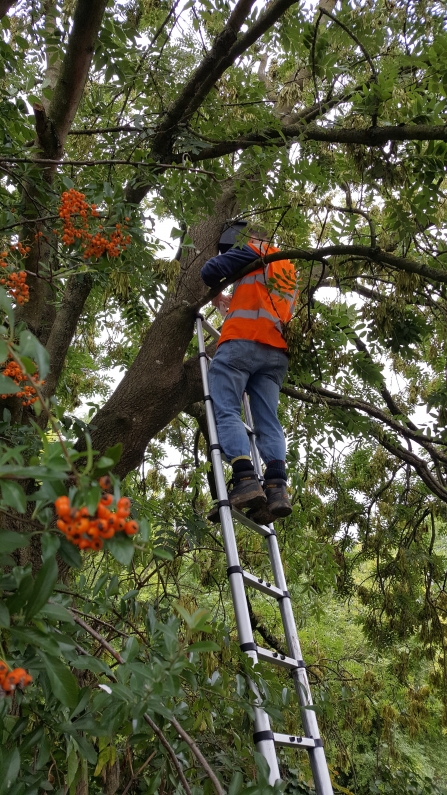
Rob from Middleton Ecology relocating a little female common pipistrelle
Whistlestop work

Rob from Middleton Ecology relocating a little female common pipistrelle
Yes – the Whistlestop Centre is home to several species of roosting bats! And the bats could not live in a better place – a building managed by a nature conservation charity!
When the Trust knew the extent of the restoration works required, bat surveys were carried out to see if these nocturnal animals were using the building. Old buildings such as the Whistlestop often provide perfect homes for bats, which like to roost beneath wooden fascia boards, under roof tiles and in roof voids. Some bats can squeeze through gaps of 1 cm or the width of your finger, so our holey roof was no match for them.

male brown long eared bat
Libby Duggan-Jones , Biodiversity Planning Officer, from Derbyshire Wildlife Trust said, “Sure enough, we found that small numbers of brown long-eared bats, common pipistrelle bats and soprano pipistrelle bats were roosting in the roof ridge tunnel, accessing the ridge and the roof void using gaps at the eaves and under ridge tiles.”

relocating bats at the Whistlestop 2018
Bat populations are declining in the UK and across Europe due to the loss of bat roosts through building demolition, unsympathetic conversions and new building methods no longer creating roosting opportunities. Because of this, bats are protected by both UK and European legislation and Derbyshire Wildlife Trust knew that the restoration works would have to make space for our nocturnal neighbours.
The restoration works are proceeding under a licence from Natural England and Derbyshire Wildlife Trust are making sure to retain access points into the roof space when the roof is re-tiled and pointed. They are adding special boxes inside the roof voids to make these areas even better for our bats. ‘Bat friendly’ roofing membrane is also being used, rather than the modern breathable membrane, which can entangle and trap bats. The works are being carried out during the autumn and winter, when the bats are likely to be using a different roost site.
“We hope that once the restoration works are complete, the building will be even better for our bats and that they may start to breed at the Whistlestop. We will monitor the bats carefully and future plans may even include a webcam so that visitors can witness what they get up to in their mysterious nocturnal lives.”
female common pipistrelle bat Whistlestop
When bats, and other protected species, are present within a development project, it is vital that all interested parties work closely together. Derbyshire Wildlife Trust have been working with Lathams Architects, Bonsers and Middeton Bell Ecology to make sure that we create a building that is not only great for people but also one that makes sure our wildlife thrives!